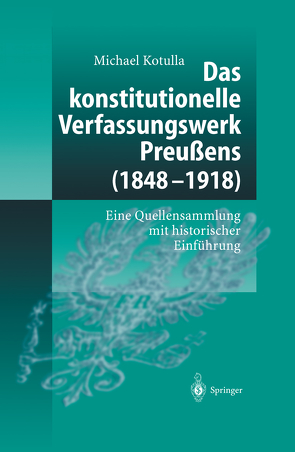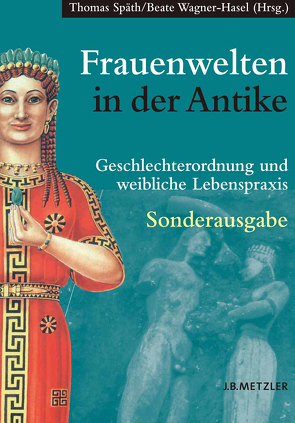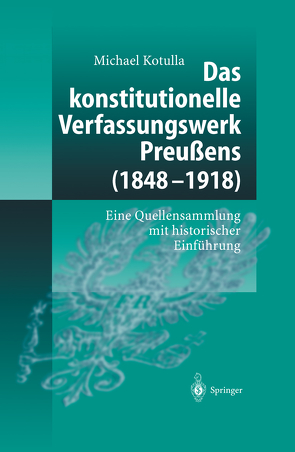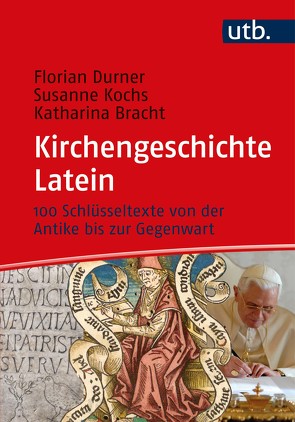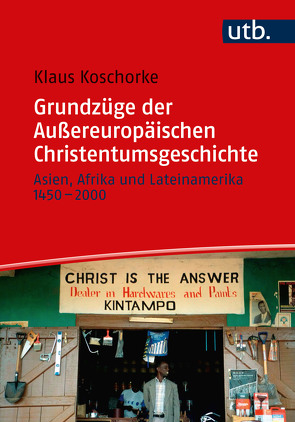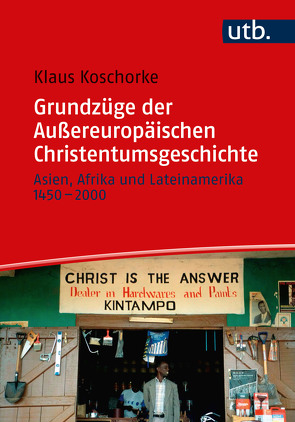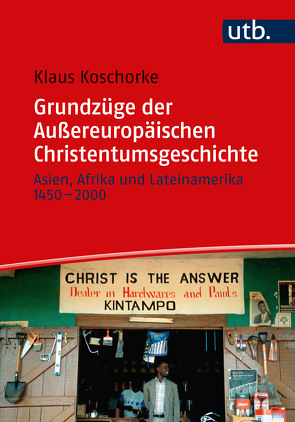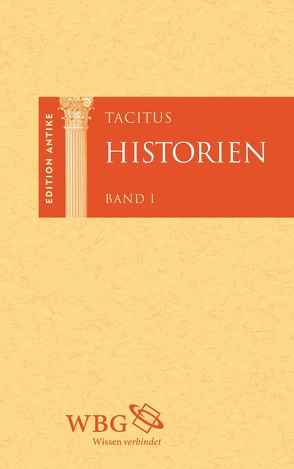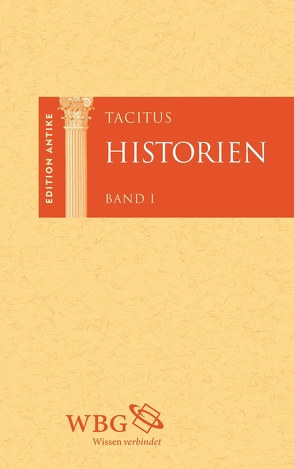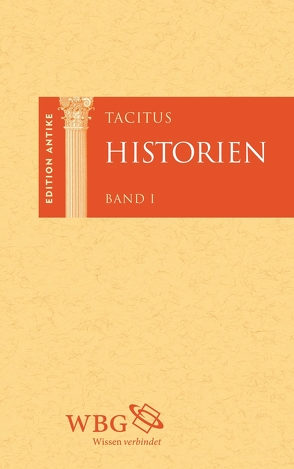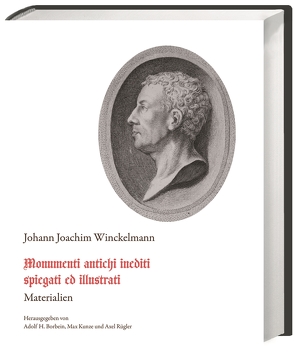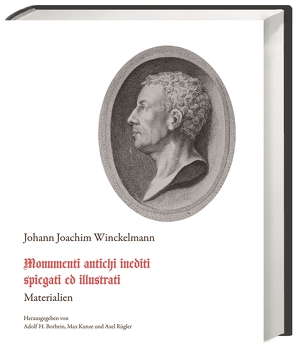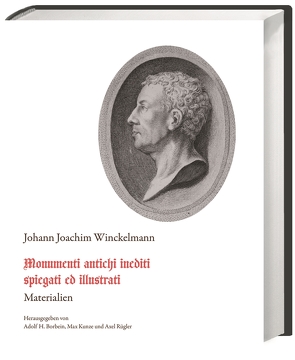Aktualisiert: 2023-07-03
> findR *
Weibliche Lebensformen in den griechischen und römischen Kulturen des Mittelmeerraumes. Von der griechischen Archaik bis zur Spätantike beleuchten die Autoren u.a. weibliche Kultpraktiken, Formen der Ehe, die Arbeitswelten, literarisch-wissenschaftliche Tätigkeit von Frauen, die Bedeutung von Erotik, Sexualität und weibliches Handeln in der Politik. Mit zweisprachigen Quellentexten und vielen Abbildungen.
Aktualisiert: 2023-07-02
> findR *
Aktualisiert: 2023-07-03
> findR *
Lernwortschatz zum Ausdrucken und Import in Vokabeltrainer-Apps
Das vorliegende Studienbuch bietet 100 lateinische Schlüsseltexte aus 2000 Jahren Kirchengeschichte für Studium und Examensvorbereitung.
Versehen mit kirchenhistorischen Einführungen, sprachlichen Erläuterungen, Übersetzungen und Literaturtipps wird dieser in der universitären Lehrpraxis erprobte Quellenband zu einem hilfreichen Begleiter für Lehrveranstaltungen, Prüfungen und Selbststudium.
Aktualisiert: 2023-07-02
> findR *
Lernwortschatz zum Ausdrucken und Import in Vokabeltrainer-Apps
Das vorliegende Studienbuch bietet 100 lateinische Schlüsseltexte aus 2000 Jahren Kirchengeschichte für Studium und Examensvorbereitung.
Versehen mit kirchenhistorischen Einführungen, sprachlichen Erläuterungen, Übersetzungen und Literaturtipps wird dieser in der universitären Lehrpraxis erprobte Quellenband zu einem hilfreichen Begleiter für Lehrveranstaltungen, Prüfungen und Selbststudium.
Aktualisiert: 2023-07-02
> findR *
Lernwortschatz zum Ausdrucken und Import in Vokabeltrainer-Apps
Das vorliegende Studienbuch bietet 100 lateinische Schlüsseltexte aus 2000 Jahren Kirchengeschichte für Studium und Examensvorbereitung.
Versehen mit kirchenhistorischen Einführungen, sprachlichen Erläuterungen, Übersetzungen und Literaturtipps wird dieser in der universitären Lehrpraxis erprobte Quellenband zu einem hilfreichen Begleiter für Lehrveranstaltungen, Prüfungen und Selbststudium.
Aktualisiert: 2023-07-02
> findR *
Die Mehrheit der christlichen Weltbevölkerung lebt heute im globalen Süden. Kenntnisse ihrer Geschichte sind darum unerlässlich. Dieses Lehrbuch bietet einen ebenso kompakten wie anschaulichen Überblick über die Christentumsgeschichte Asiens, Afrikas und Lateinamerikas seit ca. 1450. Vielfalt und Verflechtung, lokale Akteure und globale Auswirkungen stehen im Fokus der Darstellung. Karten, Abbildungen und zahlreiche Fotos sowie laufende Verweise auf leicht zugängliche Quellentexte unterstützen das Selbststudium und die Gestaltung des Unterrichts.
Aktualisiert: 2023-07-02
> findR *
Die Mehrheit der christlichen Weltbevölkerung lebt heute im globalen Süden. Kenntnisse ihrer Geschichte sind darum unerlässlich. Dieses Lehrbuch bietet einen ebenso kompakten wie anschaulichen Überblick über die Christentumsgeschichte Asiens, Afrikas und Lateinamerikas seit ca. 1450. Vielfalt und Verflechtung, lokale Akteure und globale Auswirkungen stehen im Fokus der Darstellung. Karten, Abbildungen und zahlreiche Fotos sowie laufende Verweise auf leicht zugängliche Quellentexte unterstützen das Selbststudium und die Gestaltung des Unterrichts.
Aktualisiert: 2023-07-02
> findR *
Die Mehrheit der christlichen Weltbevölkerung lebt heute im globalen Süden. Kenntnisse ihrer Geschichte sind darum unerlässlich. Dieses Lehrbuch bietet einen ebenso kompakten wie anschaulichen Überblick über die Christentumsgeschichte Asiens, Afrikas und Lateinamerikas seit ca. 1450. Vielfalt und Verflechtung, lokale Akteure und globale Auswirkungen stehen im Fokus der Darstellung. Karten, Abbildungen und zahlreiche Fotos sowie laufende Verweise auf leicht zugängliche Quellentexte unterstützen das Selbststudium und die Gestaltung des Unterrichts.
Aktualisiert: 2023-07-02
> findR *
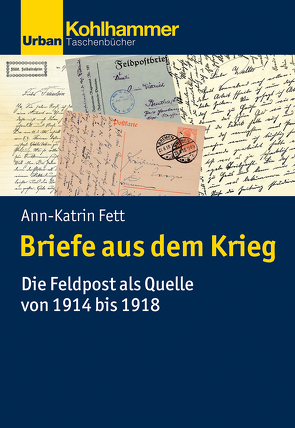
It=s difficult for us today to imagine the inhuman conditions in which soldiers fought on the various sections of the front during the First World War & historical sources such as newspaper articles, reports from the front and official announcements provide a distorted picture of the situation at the front in many respects. On the one hand, these descriptions were usually written by people who had only limited knowledge of the horrors of trench warfare. On the other, strict censorship was applied during the war in order to keep up morale among the general population. Reporting of the mood among the troops was therefore quite systematically embellished. But how did ordinary soldiers actually feel? How did their mood develop during the years of war? What did people at the front think about the decisions being taken by the government and general staff? Did the initial war euphoria last, or did increasing disillusionment set in as the terror continued? These and many other questions are of urgent interest, and not only to historians: answering them could place the First World War in a completely new light. Ann-Katrin Fett has now carried out an analysis of letters sent from the front, as a source genre that has so far received too little attention. These letters & exchanged between front-line soldiers and their loved ones at home & provide incomparable insights into the thoughts of a group of people whose testimony has otherwise scarcely featured in the historical sources. The letters reflect intimate feelings and judgements, largely without ulterior motives, and reveal both social moods and wider patterns of perception. The author investigates the way in which the brutal battles of matériel and the sight of landscapes with craters stretching across them altered contemporaries= views of death and of their own mortality, and the ways in which this was reflected in their writing. She analyses the dissonances that arose from the divergent worlds of experience on the front and at home, and the role that letters from the front played in bridging these gaps. The letters show numerous linguistic strategies for coping and invocatory speech acts that were used to establish distance from the reality of war. Distance was often expressed through omissions and playing down of events, as well as through heavy concentration on everyday and seemingly apolitical topics. Through her linguistic approach, the author succeeds in showing how people positioned themselves in their letters over several years relative to the continuing upheaval. One important finding is that the language used in letters from the front changed between 1914 and 1918. This, in turn, is used to show that there was a more general development in the history of mentality. One chapter is dedicated to each year of the war in order to make the chronological development of linguistic discourse tangible. The source material includes letters from the front and from civilians, from women and men, and from different age groups and milieus.
Aktualisiert: 2023-06-30
> findR *
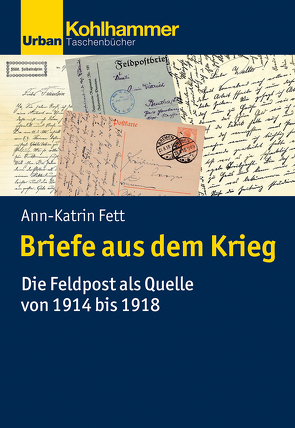
It=s difficult for us today to imagine the inhuman conditions in which soldiers fought on the various sections of the front during the First World War & historical sources such as newspaper articles, reports from the front and official announcements provide a distorted picture of the situation at the front in many respects. On the one hand, these descriptions were usually written by people who had only limited knowledge of the horrors of trench warfare. On the other, strict censorship was applied during the war in order to keep up morale among the general population. Reporting of the mood among the troops was therefore quite systematically embellished. But how did ordinary soldiers actually feel? How did their mood develop during the years of war? What did people at the front think about the decisions being taken by the government and general staff? Did the initial war euphoria last, or did increasing disillusionment set in as the terror continued? These and many other questions are of urgent interest, and not only to historians: answering them could place the First World War in a completely new light. Ann-Katrin Fett has now carried out an analysis of letters sent from the front, as a source genre that has so far received too little attention. These letters & exchanged between front-line soldiers and their loved ones at home & provide incomparable insights into the thoughts of a group of people whose testimony has otherwise scarcely featured in the historical sources. The letters reflect intimate feelings and judgements, largely without ulterior motives, and reveal both social moods and wider patterns of perception. The author investigates the way in which the brutal battles of matériel and the sight of landscapes with craters stretching across them altered contemporaries= views of death and of their own mortality, and the ways in which this was reflected in their writing. She analyses the dissonances that arose from the divergent worlds of experience on the front and at home, and the role that letters from the front played in bridging these gaps. The letters show numerous linguistic strategies for coping and invocatory speech acts that were used to establish distance from the reality of war. Distance was often expressed through omissions and playing down of events, as well as through heavy concentration on everyday and seemingly apolitical topics. Through her linguistic approach, the author succeeds in showing how people positioned themselves in their letters over several years relative to the continuing upheaval. One important finding is that the language used in letters from the front changed between 1914 and 1918. This, in turn, is used to show that there was a more general development in the history of mentality. One chapter is dedicated to each year of the war in order to make the chronological development of linguistic discourse tangible. The source material includes letters from the front and from civilians, from women and men, and from different age groups and milieus.
Aktualisiert: 2023-06-30
> findR *
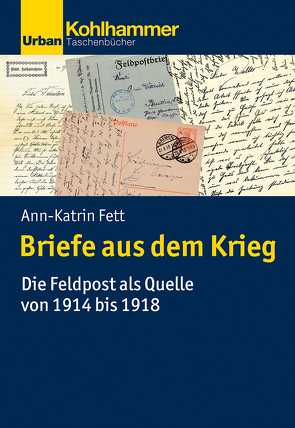
It=s difficult for us today to imagine the inhuman conditions in which soldiers fought on the various sections of the front during the First World War & historical sources such as newspaper articles, reports from the front and official announcements provide a distorted picture of the situation at the front in many respects. On the one hand, these descriptions were usually written by people who had only limited knowledge of the horrors of trench warfare. On the other, strict censorship was applied during the war in order to keep up morale among the general population. Reporting of the mood among the troops was therefore quite systematically embellished. But how did ordinary soldiers actually feel? How did their mood develop during the years of war? What did people at the front think about the decisions being taken by the government and general staff? Did the initial war euphoria last, or did increasing disillusionment set in as the terror continued? These and many other questions are of urgent interest, and not only to historians: answering them could place the First World War in a completely new light. Ann-Katrin Fett has now carried out an analysis of letters sent from the front, as a source genre that has so far received too little attention. These letters & exchanged between front-line soldiers and their loved ones at home & provide incomparable insights into the thoughts of a group of people whose testimony has otherwise scarcely featured in the historical sources. The letters reflect intimate feelings and judgements, largely without ulterior motives, and reveal both social moods and wider patterns of perception. The author investigates the way in which the brutal battles of matériel and the sight of landscapes with craters stretching across them altered contemporaries= views of death and of their own mortality, and the ways in which this was reflected in their writing. She analyses the dissonances that arose from the divergent worlds of experience on the front and at home, and the role that letters from the front played in bridging these gaps. The letters show numerous linguistic strategies for coping and invocatory speech acts that were used to establish distance from the reality of war. Distance was often expressed through omissions and playing down of events, as well as through heavy concentration on everyday and seemingly apolitical topics. Through her linguistic approach, the author succeeds in showing how people positioned themselves in their letters over several years relative to the continuing upheaval. One important finding is that the language used in letters from the front changed between 1914 and 1918. This, in turn, is used to show that there was a more general development in the history of mentality. One chapter is dedicated to each year of the war in order to make the chronological development of linguistic discourse tangible. The source material includes letters from the front and from civilians, from women and men, and from different age groups and milieus.
Aktualisiert: 2023-06-30
> findR *
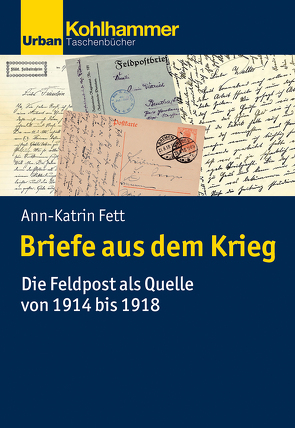
It=s difficult for us today to imagine the inhuman conditions in which soldiers fought on the various sections of the front during the First World War & historical sources such as newspaper articles, reports from the front and official announcements provide a distorted picture of the situation at the front in many respects. On the one hand, these descriptions were usually written by people who had only limited knowledge of the horrors of trench warfare. On the other, strict censorship was applied during the war in order to keep up morale among the general population. Reporting of the mood among the troops was therefore quite systematically embellished. But how did ordinary soldiers actually feel? How did their mood develop during the years of war? What did people at the front think about the decisions being taken by the government and general staff? Did the initial war euphoria last, or did increasing disillusionment set in as the terror continued? These and many other questions are of urgent interest, and not only to historians: answering them could place the First World War in a completely new light. Ann-Katrin Fett has now carried out an analysis of letters sent from the front, as a source genre that has so far received too little attention. These letters & exchanged between front-line soldiers and their loved ones at home & provide incomparable insights into the thoughts of a group of people whose testimony has otherwise scarcely featured in the historical sources. The letters reflect intimate feelings and judgements, largely without ulterior motives, and reveal both social moods and wider patterns of perception. The author investigates the way in which the brutal battles of matériel and the sight of landscapes with craters stretching across them altered contemporaries= views of death and of their own mortality, and the ways in which this was reflected in their writing. She analyses the dissonances that arose from the divergent worlds of experience on the front and at home, and the role that letters from the front played in bridging these gaps. The letters show numerous linguistic strategies for coping and invocatory speech acts that were used to establish distance from the reality of war. Distance was often expressed through omissions and playing down of events, as well as through heavy concentration on everyday and seemingly apolitical topics. Through her linguistic approach, the author succeeds in showing how people positioned themselves in their letters over several years relative to the continuing upheaval. One important finding is that the language used in letters from the front changed between 1914 and 1918. This, in turn, is used to show that there was a more general development in the history of mentality. One chapter is dedicated to each year of the war in order to make the chronological development of linguistic discourse tangible. The source material includes letters from the front and from civilians, from women and men, and from different age groups and milieus.
Aktualisiert: 2023-06-30
> findR *
Cornelius Tacitus (ca. 55–120 n. Chr.) ist der bedeutendste antike Geschichtsschreiber. In seinen Historien schildert er die Geschichte des Römischen Reiches zwischen den Jahren 69 und 96 n. Chr., die Zeit der Flavier. Ursprünglich umfasste dieses Werk 14 Bücher. Heute sind davon lediglich die Bücher I bis IV sowie der Anfang von Buch V erhalten. Tacitus selbst charakterisiert seine Darstellung als eine Ansammlung von »Mißgeschick, von Schlachtengreueln, zwietrachterfüllten Meutereien, ja selbst von Schreckenstaten in Friedenszeit«. Es ist der Widerspruch zwischen den Ereignissen seiner Zeit und der altrömischen Tugend, der hohen Wertschätzung von Tugend und Anstand in der Vergangenheit, die Tacitus hier gewissermaßen als Grundlinie seines historiographischen Werkes zum Ausdruck bringt. Alfons Städele legt hier eine hervorragende neue Übersetzung der Historien vor und ergänzt damit die Werke Tacitus' in der Edition Antike.
Aktualisiert: 2023-06-22
> findR *
Cornelius Tacitus (ca. 55–120 n. Chr.) ist der bedeutendste antike Geschichtsschreiber. In seinen Historien schildert er die Geschichte des Römischen Reiches zwischen den Jahren 69 und 96 n. Chr., die Zeit der Flavier. Ursprünglich umfasste dieses Werk 14 Bücher. Heute sind davon lediglich die Bücher I bis IV sowie der Anfang von Buch V erhalten. Tacitus selbst charakterisiert seine Darstellung als eine Ansammlung von »Mißgeschick, von Schlachtengreueln, zwietrachterfüllten Meutereien, ja selbst von Schreckenstaten in Friedenszeit«. Es ist der Widerspruch zwischen den Ereignissen seiner Zeit und der altrömischen Tugend, der hohen Wertschätzung von Tugend und Anstand in der Vergangenheit, die Tacitus hier gewissermaßen als Grundlinie seines historiographischen Werkes zum Ausdruck bringt. Alfons Städele legt hier eine hervorragende neue Übersetzung der Historien vor und ergänzt damit die Werke Tacitus' in der Edition Antike.
Aktualisiert: 2023-06-22
> findR *
Cornelius Tacitus (ca. 55–120 n. Chr.) ist der bedeutendste antike Geschichtsschreiber. In seinen Historien schildert er die Geschichte des Römischen Reiches zwischen den Jahren 69 und 96 n. Chr., die Zeit der Flavier. Ursprünglich umfasste dieses Werk 14 Bücher. Heute sind davon lediglich die Bücher I bis IV sowie der Anfang von Buch V erhalten. Tacitus selbst charakterisiert seine Darstellung als eine Ansammlung von »Mißgeschick, von Schlachtengreueln, zwietrachterfüllten Meutereien, ja selbst von Schreckenstaten in Friedenszeit«. Es ist der Widerspruch zwischen den Ereignissen seiner Zeit und der altrömischen Tugend, der hohen Wertschätzung von Tugend und Anstand in der Vergangenheit, die Tacitus hier gewissermaßen als Grundlinie seines historiographischen Werkes zum Ausdruck bringt. Alfons Städele legt hier eine hervorragende neue Übersetzung der Historien vor und ergänzt damit die Werke Tacitus' in der Edition Antike.
Aktualisiert: 2023-06-22
> findR *
Band 6,3 der Reihe »Johann Joachim Winckelmann: Schriften und Nachlass«
Aktualisiert: 2023-06-19
> findR *
Band 6,3 der Reihe »Johann Joachim Winckelmann: Schriften und Nachlass«
Aktualisiert: 2023-06-19
> findR *
Band 6,3 der Reihe »Johann Joachim Winckelmann: Schriften und Nachlass«
Aktualisiert: 2023-06-19
> findR *
Beißender Spott, Ironie und maßlose Übertreibung sind die Kennzeichen einer guten Satire. Lucilius, der römische Dichter, gilt als Erfinder dieser Gattung. Der vorliegende Band präsentiert seine Satiren in einer neuen zweisprachigen Ausgabe und bietet einen eindrucksvollen Einblick in dessen Themenvielfalt.
Aktualisiert: 2023-06-19
> findR *
MEHR ANZEIGEN
Bücher zum Thema Quellentexte
Sie suchen ein Buch über Quellentexte? Bei Buch findr finden Sie eine große Auswahl Bücher zum
Thema Quellentexte. Entdecken Sie neue Bücher oder Klassiker für Sie selbst oder zum Verschenken. Buch findr
hat zahlreiche Bücher zum Thema Quellentexte im Sortiment. Nehmen Sie sich Zeit zum Stöbern und finden Sie das
passende Buch für Ihr Lesevergnügen. Stöbern Sie durch unser Angebot und finden Sie aus unserer großen Auswahl das
Buch, das Ihnen zusagt. Bei Buch findr finden Sie Romane, Ratgeber, wissenschaftliche und populärwissenschaftliche
Bücher uvm. Bestellen Sie Ihr Buch zum Thema Quellentexte einfach online und lassen Sie es sich bequem nach
Hause schicken. Wir wünschen Ihnen schöne und entspannte Lesemomente mit Ihrem Buch.
Quellentexte - Große Auswahl Bücher bei Buch findr
Bei uns finden Sie Bücher beliebter Autoren, Neuerscheinungen, Bestseller genauso wie alte Schätze. Bücher zum
Thema Quellentexte, die Ihre Fantasie anregen und Bücher, die Sie weiterbilden und Ihnen wissenschaftliche
Fakten vermitteln. Ganz nach Ihrem Geschmack ist das passende Buch für Sie dabei. Finden Sie eine große Auswahl
Bücher verschiedenster Genres, Verlage, Autoren bei Buchfindr:
Sie haben viele Möglichkeiten bei Buch findr die passenden Bücher für Ihr Lesevergnügen zu entdecken. Nutzen Sie
unsere Suchfunktionen, um zu stöbern und für Sie interessante Bücher in den unterschiedlichen Genres und Kategorien
zu finden. Unter Quellentexte und weitere Themen und Kategorien finden Sie schnell und einfach eine Auflistung
thematisch passender Bücher. Probieren Sie es aus, legen Sie jetzt los! Ihrem Lesevergnügen steht nichts im Wege.
Nutzen Sie die Vorteile Ihre Bücher online zu kaufen und bekommen Sie die bestellten Bücher schnell und bequem
zugestellt. Nehmen Sie sich die Zeit, online die Bücher Ihrer Wahl anzulesen, Buchempfehlungen und Rezensionen zu
studieren, Informationen zu Autoren zu lesen. Viel Spaß beim Lesen wünscht Ihnen das Team von Buchfindr.
